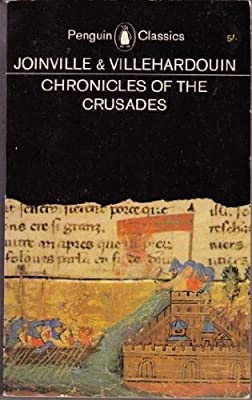|
Chronicles of the Crusades By Jean de Joinville and Geoffroy de Villehardouin, edited by Caroline Smith Published in 1207 (Villehardouin) and 1308 (Joinville), translated in 2009 400 Pages Thibault’s Score: 4/5 This book is a collection of different accounts of the crusades. It includes several accounts, the most notable being Jean de Joinville’s account of the crusades of King Saint Louis 9 and Villehardouin’s account of the sack of Constantinople during the 4th crusade. It also includes a detailed and epic account of the siege of Acre during the 3rd crusade. I decided to read this as the last of the major crusades history books I would read because I believed it would be the most difficult to understand. Following the events is nearly impossible without resorting to third party analysis by historians. However, there are so many fantastic memorable details and passages that are often lost in the accounts of modern historians. The book opens with an account of a pogrom against the Jews of England to celebrate the coronation of King Richard the Lionheart. The description of the pogrom is almost hilarious to modern readers, barring the fact that it describes the slaughter and abuse of innocent Jews. They describe Jews as engaging in human sacrifice to “their father the devil” and as “bloodsuckers.” The way that the authors describe the slaughter of the Jews as a cleaning, and chastise Winchester for sparing its Jewry is morbidly fascinating. There is also a list of miracles which occur during the siege of Acre during the third crusade. Most of the miracles detail ways that soldiers survived various events and attacks in improbable fashions. However, some of the miracles are hilarious to a modern audience. The most ludicrous is when the crusaders describe with joys how a Muslim Egyptian admiral accidentally drops a pot of Greek fire during a naval battle and burns off his penis. The description of Holy Roman Emperor Frederick Barbarossa is also fascinating. The authors basically write about him as if he were an actual Roman empire and the Roman empire never fell. They describe the generals of antiquity who fought against the Persians as “our generals” and describe the Persians as a strange sort of proto Muslims. The crusaders also use antiquity place names to describe their Muslim adversaries - for example, one Muslim archer is described as a “Parthian.” There are countless hilarious passages that just threw me into fits of uncontrollable laughter. King Richard the Lionheart and one of his political opponents within the crusader camp essentially engage in a medieval rap battle, writing disparaging poems about each other. Old Jewish men lure young boys to cross Europe so that they can cannibalize them. Most amusing though are the descriptions of Muslims, Jews, Greek Othodox people, and other non-Catholics. When studying history, reading primary accounts is extremely important. These accounts are often quite difficult to understand and interpret without first diving into the period. Especially accounts as old as these. A fascinating and enjoyable read - these accounts constitute of long and somewhat dull passages punctuated by exciting battles, fascinating anachronisms, and hilarious (by modern standards) descriptions of events.
0 Comments
Leave a Reply. |
Thibault SerletMost of my articles are book reviews, but I also write about many other topics. Archives
December 2023
Categories |

 RSS Feed
RSS Feed